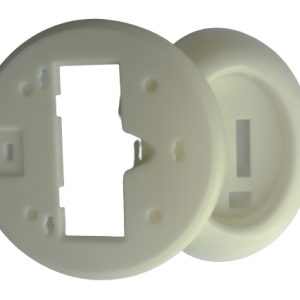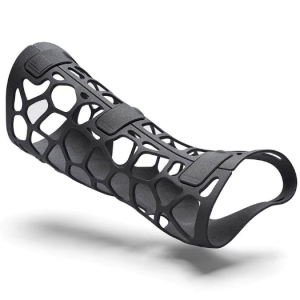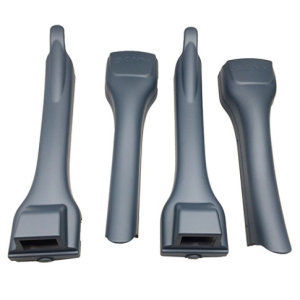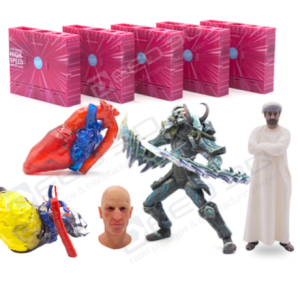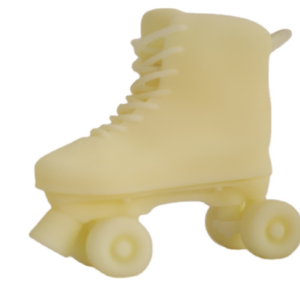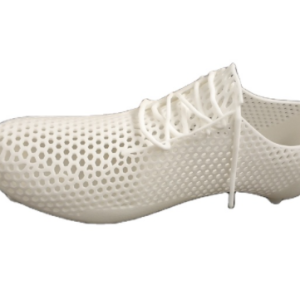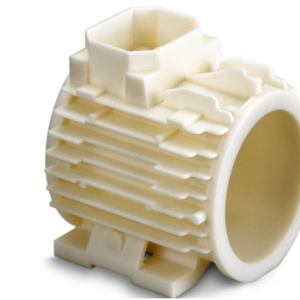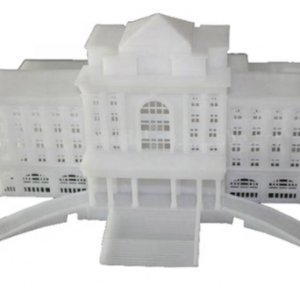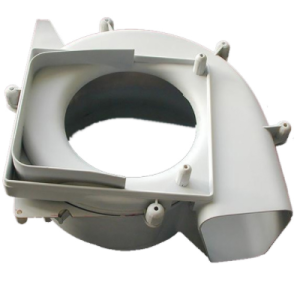Selective Laser Sintering (SLS)
The Power Behind SLS 3D Printing
Selective Laser Sintering, widely known as SLS, is a professional-grade 3D printing method that constructs solid parts from powdered material by fusing it with a laser. This process transforms digital designs into durable, high-resolution physical components layer by layer. What sets SLS apart is its ability to fabricate highly detailed, robust parts without the need for support structures. Industries such as aerospace, automotive, product development, and healthcare frequently rely on SLS for both prototyping and small-batch production.
Trusted partnerships, unrivaled results CAD Deziner’s track record























How SLS 3D Printing Works
At its core, SLS uses a high-powered laser to trace cross-sectional layers of a digital design into a heated bed of polymer powder. As the laser moves, it selectively fuses the particles together. Once a layer is complete, the powder bed drops slightly, and a fresh layer of powder is spread on top. This cycle repeats until the object is fully formed. The unused powder surrounding the printed part naturally supports the structure, removing the need for added supports and allowing for far greater design flexibility.
Post-Processing Options for SLS Parts
Basic Finish
Once printing is complete, parts are manually and mechanically cleaned of excess powder. Sandblasting is often used to achieve a consistent, white matte finish that resembles compressed chalk or sugar cube textures.
Dyed Colour Options
For added visual appeal or functional identification, SLS parts can be dyed in a range of colours, including black, red, blue, yellow, and green. These colours are absorbed into the surface layer, typically penetrating up to 0.010 inches. While some variation can occur between batches, black tends to provide the most uniform appearance.
Vapor Smoothing
To elevate both form and function, vapour smoothing is applied using an automated system like AMT PostPro3D. This technique exposes the part to a controlled chemical vapour, softening the surface and reducing texture irregularities. The result is a semi-gloss finish that not only looks sleek but also boosts part strength and chemical resistance.
Media Tumbled
For those seeking a softer tactile finish, abrasive tumbling polishes the part using small media particles. This reduces print lines, eases sharp edges, and leaves the part with a smooth eggshell-like texture that’s well-suited for consumer-facing applications.
Nickel Plating
To enhance structural durability, SLS parts can be coated through a dual-stage copper and nickel plating process. This adds a metallic shell roughly 0.004 to 0.006 inches thick, reinforcing stiffness and wear resistance. While not primarily cosmetic, the metallic finish offers a rugged industrial appearance.
Post-Processing Options for SLS Parts
Design Validation and Concept Models
SLS allows designers and engineers to quickly bring digital concepts to life. Its rapid turnaround is perfect for validating aesthetics, form, and fit before moving to mass production.

Functional Prototypes
Beyond appearance, SLS can produce working prototypes with moving parts or complex assemblies in a single build. These parts often mimic the mechanical properties of final production materials.

Custom Production and Short Runs
Thanks to its precision and repeatability, SLS excels in producing low to mid-volume batches of final-use components. It is particularly useful when custom parts or variations are needed without tooling delays.

Surface Refinement for Multi-Jet Fusion
Although tailored for SLS, vapour smoothing is also applied to HP Multi Jet Fusion parts. The process minimises layer visibility and creates a polished, sealed exterior ideal for end-use parts or consumer goods.

Key Advantages of Using SLS
Advantages of SLS
Intricate Designs Made Simple
SLS removes the barriers of traditional manufacturing. Complex internal features, hollow sections, lattice structures, and delicate geometries can all be printed without internal support scaffolds.
Built-In Structural Support
The powder bed itself provides structural reinforcement during the build, eliminating the need for support materials. This not only cuts waste but also speeds up post-processing significantly.
Exceptional Strength and End-Use Quality
Parts printed via SLS are known for their toughness and resistance to wear. With materials such as PA12 Nylon, TPU, and glass-filled polymers, SLS can deliver parts that stand up to real-world mechanical stresses.
Wide Range of Material Choices
From rigid nylons to flexible elastomers, SLS supports a versatile material library. Designers can choose materials tailored to impact resistance, flexibility, temperature endurance, or even chemical compatibility.
Outstanding Precision and Accuracy
SLS printers offer excellent dimensional tolerances and fine layer resolution. This makes them ideal for applications where accuracy and surface finish are non-negotiable, such as mechanical fittings and enclosures.
Fast Prototyping, Faster Iteration
Compared to traditional fabrication methods, SLS delivers high-quality prototypes in a fraction of the time. Iterative design is made easier with fast turnaround and no need for moulds or fixtures.
Scalability That Grows With You
Whether you need one part or one thousand, SLS adapts effortlessly. The same machine and process can handle everything from single-item prototyping to batch manufacturing without retooling.

Why Work With CAD Deziners?
What Sets SLS Apart?
While similar in concept to Direct Metal Laser Sintering (DMLS), SLS focuses on thermoplastic powders, usually nylon-based. This makes it more accessible and cost-effective for a wide variety of product designs. SLS builds components with consistent quality, layer by layer, using digital instructions to achieve strong, durable, and highly detailed end results. It’s an excellent choice for those looking to bridge the gap between prototype and final production with minimal compromise.

3D Printing Materials – Technical Specifications
| Material | Surface Quality | Minimum Detail Size | Minimum Wall Thickness | Maximum Build Size (mm) |
|---|---|---|---|---|
|
Nylon PA2200 (White) |
Smooth |
0.3 mm |
0.7 mm |
675 × 545 × 366 |
|
Nylon PA11/12 |
Smooth |
0.2 mm |
0.6 mm |
380 × 380 × 284 |
|
Glass-Filled Nylon 3200 |
Smooth |
0.5 mm |
1.0 mm |
380 × 380 × 284 |
|
Alumide (SLS) |
Smooth |
0.5 mm |
0.8 mm |
315 × 240 × 190 |
|
Multi Jet Fusion PA12 (Black) |
Smooth |
0.2 mm |
0.7 mm |
380 × 380 × 284 |
|
HP Premium Nylon PA12 (SLS) |
Smooth |
0.2 mm |
0.8 mm |
380 × 380 × 284 |
Material Properties and Common Uses
| Material | Mechanical & Thermal Properties | Common Applications |
|---|---|---|
Nylon PA2200 (White) | Tensile Strength: 48 MPa; Heat Resistance: 172–180 °C | Ideal for durable mechanical parts, snap-fit connections, and moving components. Widely used in automotive, medical, and industrial packaging. |
Nylon PA11/12 | Tensile Strength: 48 MPa; Temperature Range: 46–180 °C | Preferred for functional prototypes, hinges, and automotive interiors with impact-related requirements. |
Flexible TPU 86A | Tensile Strength: 7 MPa; Heat Resistance: 138 °C | Suitable for flexible parts like caster wheels, medical tools, sporting equipment, footwear, and power tool grips. |
Glass-Filled Nylon 3200 | Tensile Strength: 51 MPa; Melting Point: 176 °C | Used in applications requiring enhanced stiffness and strength, including structural components. |
Nylon PA12 (Glass-Filled) | Tensile Strength: 12–140 MPa; Melting Point: 90–182 °C | Ideal for demanding conditions in aerospace and automotive industries; serves well in both prototypes and final products. |
Alumide | Tensile Strength: 42–48 MPa; Melting Point: 172–180 °C | Best for parts needing rigidity and a metallic finish, including automotive elements and custom designs. |
Multi Jet Fusion PA12 | Tensile Strength: 48 MPa; Temperature Range: 95–175 °C | Excellent for mechanical systems like gears and end-use parts requiring fine detail and strength. |
HP Premium Nylon PA12 (SLS) | Tensile Strength: 48 MPa; Temperature Range: 95–178 °C | Commonly used in aerospace, medical fixtures, and food-safe tooling due to its reliability and thermal resistance. |
Projects
